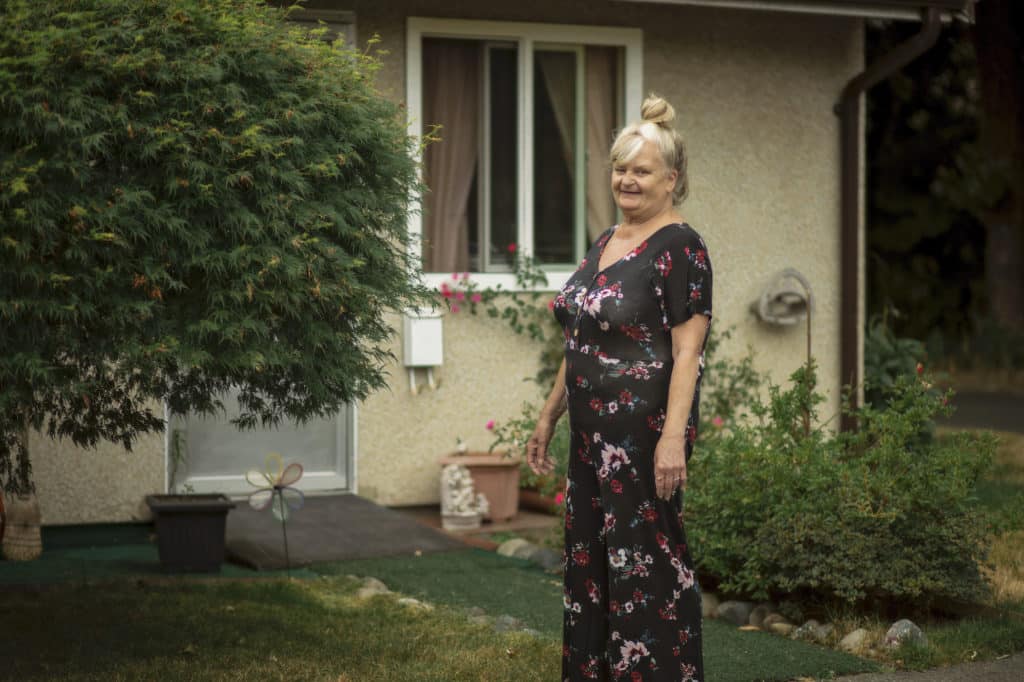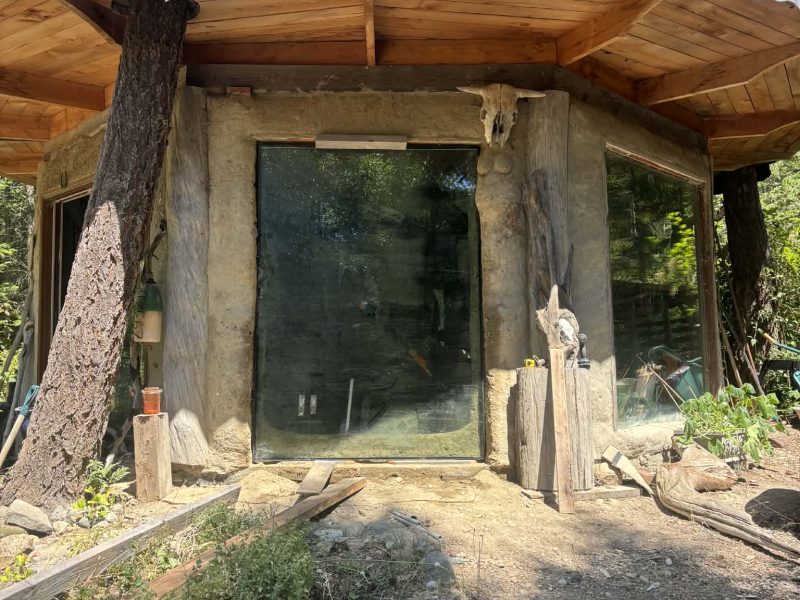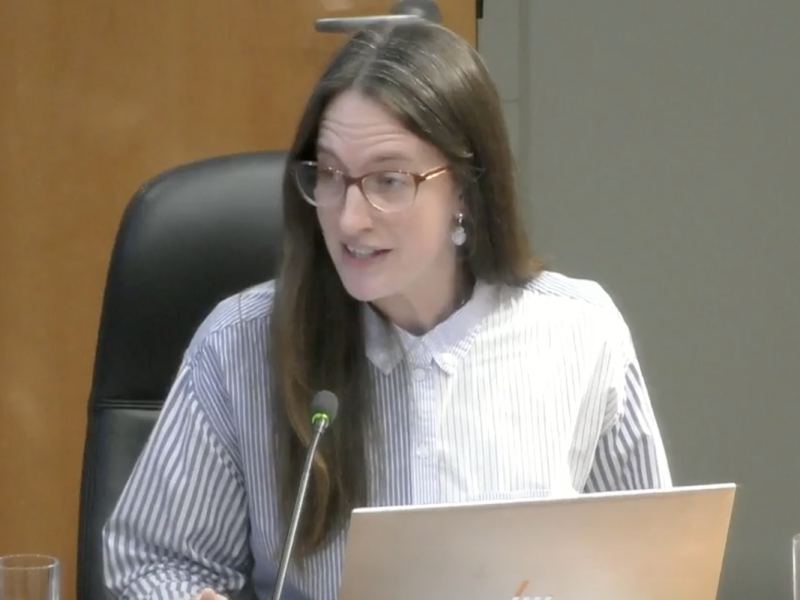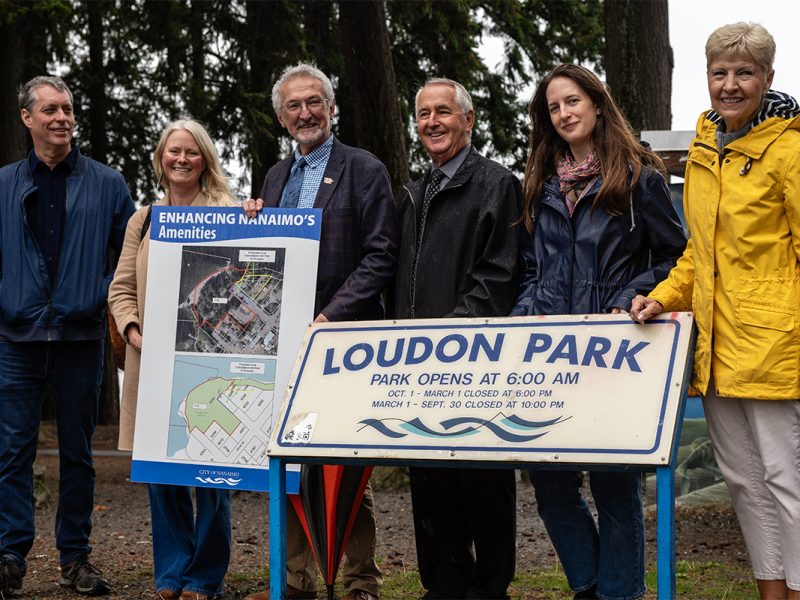
This article is Part 4 of our series It Takes a Village, which investigates low-income seniors’ concerns at their Nanaimo Affordable Housing Society-run home. Part 3 exposes residents’ concerns over a lack of wellness checks, contributing to incidents where seniors lay injured or dead for days or months.
Low-income seniors in Nanaimo say their housing provider is not doing enough to prevent vulnerable residents from being left dead or in medical distress alone for days without help.
When Catherine Robinson, 65, reported to Nanaimo Affordable Housing Society (NAHS) staff that she had not seen her neighbour at their complex on Buttertubs Drive for some time and was concerned, she was told to call the police.
“I went to pick up my phone but I looked out my window and saw a pickup truck — one of her family members. So I run out my door and I say, ‘I hope she’s okay because I had a feeling something happened to her. And he said, ‘Yeah, she fell and broke her hip and laid on her floor for a day and a half,’” says Robinson.
An investigation by The Discourse found 11 instances of residents found two or more days after their estimated time of death at three NAHS-run complexes since 2013. In one instance, a tenant was dead for an estimated 97 days before they were found.
Tenants at the Buttertubs Drive complex recall that, under previous management, staff and board members helped organize a contact list and buddy system to keep tabs on residents. Staff and tenants would conduct wellness checks if they were concerned for another tenant’s wellbeing. That changed after NAHS took over the building in 2014. The society now owns and operates about 15 complexes in Nanaimo serving mostly seniors.
In the context of last year’s deadly heat wave, the issue of wellness checks for seniors and other vulnerable tenants has become urgent. The BC Coroners Service report on 619 heat-related deaths from the 2021 heat dome finds that a system of wellness checks is one of “the most impactful interventions” and recommends that provincial health authorities, local governments and those most vulnerable to heat coordinate to respond.
But it’s not clear who should carry out wellness checks for vulnerable residents at the building level, and how.

Anna Cooper, a staff lawyer with Pivot Legal Society, which advocates for the legal rights of low-income tenants and other people living in poverty, warns that solutions led by landlords and police could undermine tenants’ rights, and that consent is critical.
Ultimately, the best solutions will involve supporting tenants to build a response that meets their needs, Cooper says.
BC Housing and NAHS respond to heat-related deaths
In response to the heat dome deaths, BC Housing says it will soon require extreme heat response plans for housing it directly manages or funds through non-profit partners, including NAHS. Those plans will include tenant vulnerability assessments and an “activation of wellness checks on the most vulnerable tenants, such as seniors and those living with disabilities.”
BC Housing’s report on the heat dome found that 54 of the 619 deaths, or nine per cent, were recorded at housing sites that it manages or funds.
BC Housing reached out to non-profit operators this spring to “encourage them” to purchase fans, portable air conditioners and misters, “locally with their current budget,” a representative stated in an email. Additional financial support or reimbursement would be made available if needed.
“Since then, NAHS has informed us that they have purchased seven portable A/C units, five floor fans and five pedestal fans, which were installed in the common areas of 153 Wallace, 350 Prideaux and 451 Selby, as well as in the office space of 350 Prideaux and 77 Mill Street.”
Other older buildings at high risk of overheating, such as the 1970s-built Corlett Place at 619 Comox Rd., will be receiving significant renovations including cooling measures as part of a BC Housing-funded Capital Renewal program.
Housing providers’ responsibilities are unclear
While NAHS will be required to have an extreme heat plan in place for its next operational review in early 2023, according to a BC Housing representative, “ultimately it is the responsibility of the non-profit operator to develop their response protocols.”
But many non-profit housing providers are unclear on what the law allows or requires of them, says Cooper, with Pivot Legal Society. It’s an issue her organization runs into all of the time.
“It does not appear that BC Housing in funding — whether fully or partially — various operations does anything to ensure that the providers are clear [on their legal responsibilities],” she says, adding that Pivot Legal Society is waiting on results from a freedom of information request to confirm this.
This, coupled with a lack of funding to implement supports, leads Pivot Legal Society to have “very little confidence” in the government’s ability to implement the recommendations in the heat death report related to vulnerable tenants.
It’s also unclear the extent to which landlords have an obligation to keep units cool in high heat.
“Ensuring units are livable is not ‘optional’ for landlords, it is their most basic legal obligation,” says Cooper, citing the Residential Tenancy Act. “This likely includes maintaining a suitable temperature in extreme heat.” But that question has not yet been settled by the courts, and as of now, cooling is not considered an essential service.
NAHS says it isn’t responsible for wellness checks
Actions implemented by BC Housing and NAHS in response to heat deaths may support tenants during extreme weather events. But they won’t support tenants during other emergencies. Buttertubs residents are asking for wellness checks and safety protocols to help seniors in any emergency, such as an accidental fall.
The Discourse spoke with a number of former NAHS employees and board members about wellness checks, some of whom said they had advocated for the organization to have some kind of formal policy around how to respond when a tenant has not been seen. NAHS has since adopted a policy in alignment with BC Housing, who they partner with, which is that staff call the RCMP.
NAHS maintains that wellness checks, beyond its policy to call RCMP, are not its responsibility. “Our properties are designed for independent tenants,” says CEO Andrea Blakeman. “Should residents require additional assistance for daily living, we provide referrals to many local resources and service providers … who are experts in providing supports specific to the tenant’s needs.”
RCMP response should be a last resort, advocate says
Given the violent history of police with regard to wellness checks on people with mental health issues, leaving it up to RCMP is particularly concerning, Cooper says. “Emergency services are wildly expensive, and failing to properly support people to be well in their buildings is not only a human rights concern on a number of levels, but also ultimately [costs more].”
Relying on first responders for wellness checks during extreme heat could also trigger delays. Calls to 911 doubled during the peak of the heat dome, according to the coroner’s investigation, from around 6,500 to nearly 12,000 during the peak heat. The investigation also found 50 instances where paramedics took 30 minutes or longer to get to the person in need.
Const. Gary O’Brien with Nanaimo RCMP agrees that building-based measures could help alleviate the workload of first responders, who deal with an average of 400 well-being calls per month.
He says he “can’t stress enough” the importance of checking on older folks, people with disabilities and those who are reclusive or live alone, especially during the summer months.
“If you have a shut-in on your street, check in on them. Do they have any airflow? Do they have any fans? Are they in need of medical attention? … Do a knock on the door, see how they’re doing, just say hi, do a quick check before calling us,” says O’Brien.
“You’re calling somebody — first responders — away from their duties to deal with it. Whereas somebody could have done the exact same thing. They’re not putting themselves at risk. Just a neighbour checking on a neighbour.”
Landlord-led wellness checks can raise concerns
While landlords can legally enter a unit at any time without notice where an entry is necessary to protect life or property, they don’t necessarily have an obligation to. And leaving the responsibility of wellness checks to landlords or police alone raises serious concerns for lawyers at Pivot Legal Society and the Tenant Resource and Advisory Centre, another organization that advocates for tenants’ rights.
“Our fundamental position is that all tenants, regardless of their ability to afford the private market, deserve to have their basic tenancy rights protected,” says Cooper, such as the rights to quiet enjoyment and privacy.
“We have seen both housing providers and BC Housing being all too willing to treat low-income tenants in a condescending and rights violating manner that doesn’t actually center them in the solutions that they’re working on.”
Whatever the process for ensuring vulnerable tenants are safe in the event of extreme heat or other emergencies, be it distributing resident contact lists or scheduling regular wellness checks, it needs to be done with consent from tenants themselves, she says.
Community-based and tenant-led solutions
Housing providers should consider employing some tenants to help implement programming such as wellness checks within the subsidized building they call home, says Cooper. Doing so is more cost-effective than relying on RCMP and building staff, and less likely to infringe on tenants’ rights.
Organizations such as Nanaimo Family Life Association (NFLA), which supports local seniors with housing-related needs, might also help fill in this gap.
“Specifically with seniors, we know what works best, is that the housing that they get comes with support that helps them maintain their independence, age in place, if that’s what they choose,” says NFLA’s executive director Deborah Hollins. “Those are the kinds of programs we need to be investing in.”
“We’re currently looking at, is there a role for us to play here [generally in] bringing services to seniors in housing, where they’re not getting those kinds of supports?”
But the capacity of organizations like NFLA is far from the need, Hollins says. “We’re triaging, and we’re dealing with the most desperate situations, which means lots of people fall through the cracks sometimes. Nobody wants to do it this way. Nobody does.”
At Buttertubs, Robinson and other residents are pushing for changes, and organizing to better support each other.
Tenants successfully advocated for a cooling room to be available during the summer heat, she says.
Robinson and her neighbour, the one who lay for a day and a half with a broken hip, have decided to compile and distribute a phone list, so tenants can check in with each other as they used to.
BC Housing says tenants living in buildings it funds can confidentially share their concerns with BC Housing by emailing complaintresolution@bchousing.org.



